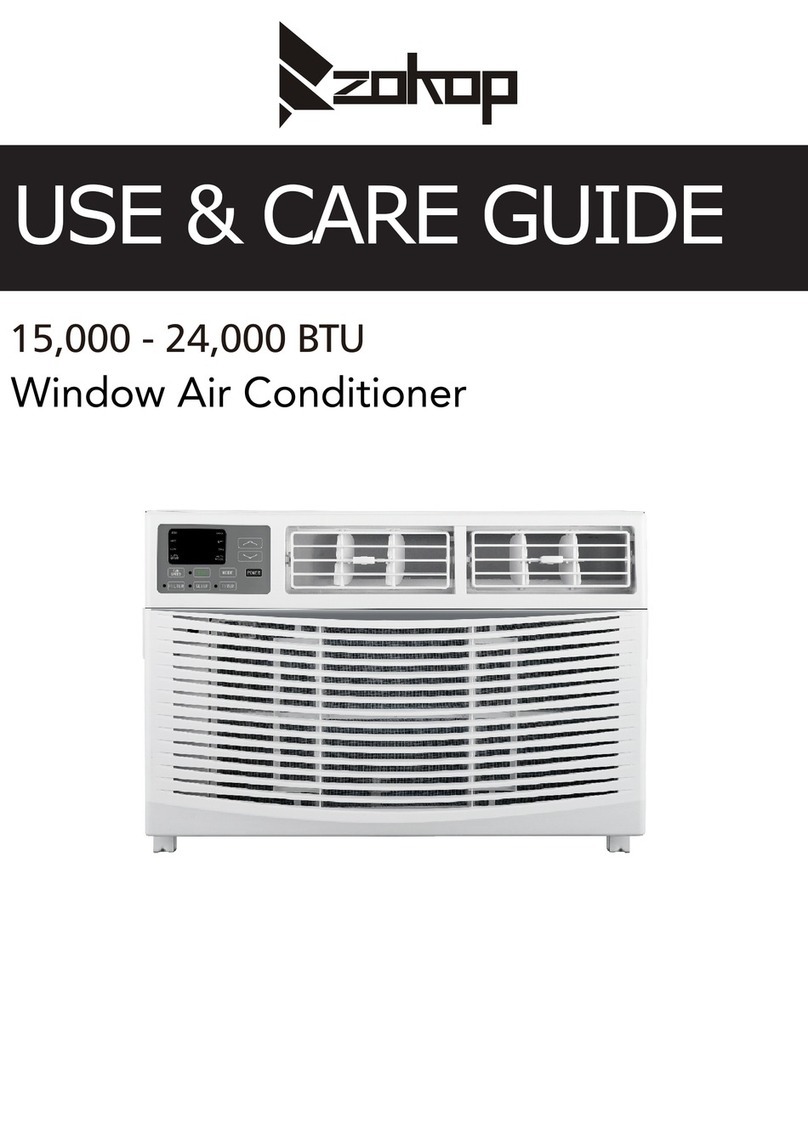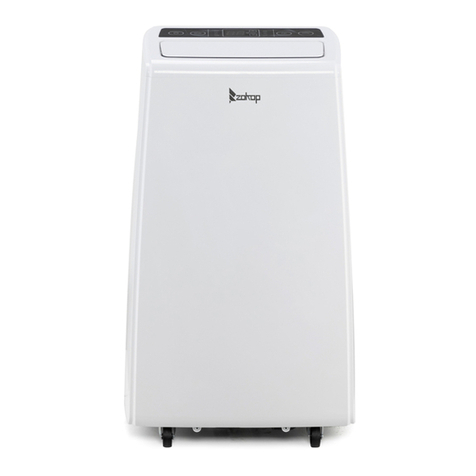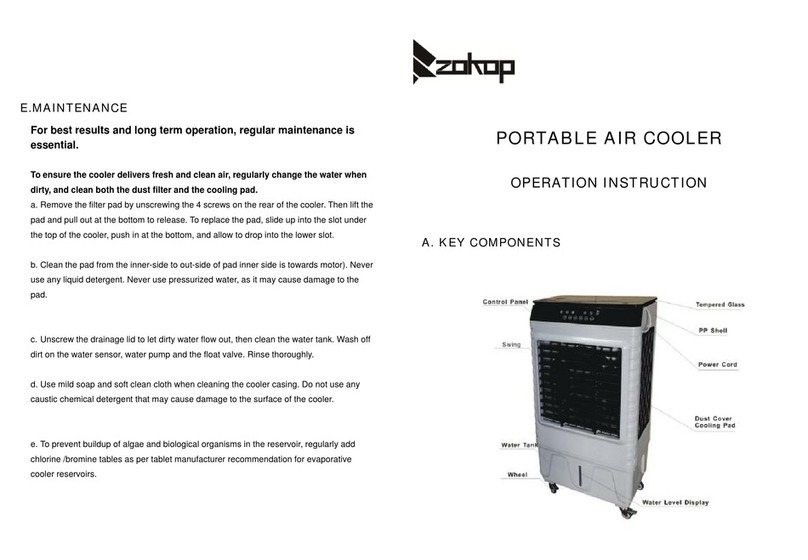
Page: 9/17
2. Operation instructions:
1). When the unit is energized for the first time, the buzzer will play the energizing
music, the double 8 display area will display the ambient temperature value, and the
temperature display range is 10—35℃.H is indicated if the temperature is higher than
35℃. L is indicated when the temperature is lower than 10℃and the unit enters the
standby state.
2). ON/OFF button: used to start/shut down the unit. Upon start, the power indicator
displays the green light; after the ON/OFF button is pressed to start the unit, the
buzzer plays the startup music, the unit first enters the cooling mode, the double 8
area displays the ambient temperature. The fan speed is high. In the meanwhile, the
power indicator displays the green light and the high indicator illuminates. This button
may be pressed in the start state to shut down the unit, all loads stop working, the
buzzer plays the shutdown music and the unit enters the standby state; When the unit
is started again, it will operate in accordance with the status prior to shutdown.
3). Mode button:
a) Cooling only models: press this button to switch between the cooling, air supply,
dry and sleep modes. In the meanwhile, corresponding cooling, air supply, dry
and sleep mode indicators will illuminate.
b) Cooling & heating models: press this button to switch between the cooling, air supply,
dry and heating modes. In the meanwhile, corresponding cooling, air supply, dry and
heating mode indicators will illuminate.
c) In the dry mode, if the ambient temperature ≥17℃, the compressor will start. Then,
the unit is controlled in the following manner: when the ambient temperature ≤15℃,
the compressor shuts down. When the ambient temperature rises to be ≥17℃, the
compressor starts again. The start/stop of the compressor meets the requirement for
3-minute protection time. The fan is forced to switch to low level.
d) In the sleep mode, this unit is performing the cooling function. After operating two
hours, the set temperature increases 1℃automatically. After operating for
another 2 hours, the set temperature will increase 1℃again. Then, the set
temperature will not change and the fan is forced to switch to low level.
4). Fan button: the fan may operate in the following manners:
a) In the cooling, heating and air supply mode: high→low→high→… and so on.
b) Switching between the cooling, air supply and heating modes: maintain the fan
speed of the previous mode.
5) Timer button:
a) Upon start, press the Timer button to enter timed shutdown. Upon shutdown, press
this button to enter timed start. In the meanwhile, the timer indicator will illuminate.
b) Press the Timer button to enter the timing function (timed start/timed shutdown).
Adjust the up or down button to set the timing time. The time will cycle in the order of
1-2-3-……24 -0-1 hours or 24-23-22-……1 -0-24 hours. The
adjustment time of the timing function is relative time.
c) After timed start is set, once the timed start time is reached, the unit will start. In the
meanwhile, the timer indicator will extinguish and the ambient temperature is displayed.
d) After timed shutdown is set, once the timed shutdown time is reached, the unit will
shut down. In the meanwhile, the timer indicator will extinguish and the ambient temperature
is displayed.
e) Only the last setting of the timing function is valid and valid once only.
f) ON/OFF operations caused by the button or remote control will clear all timing
settings.
g) Once the timing is determined, if the timer button is pressed once, it is possible to
































